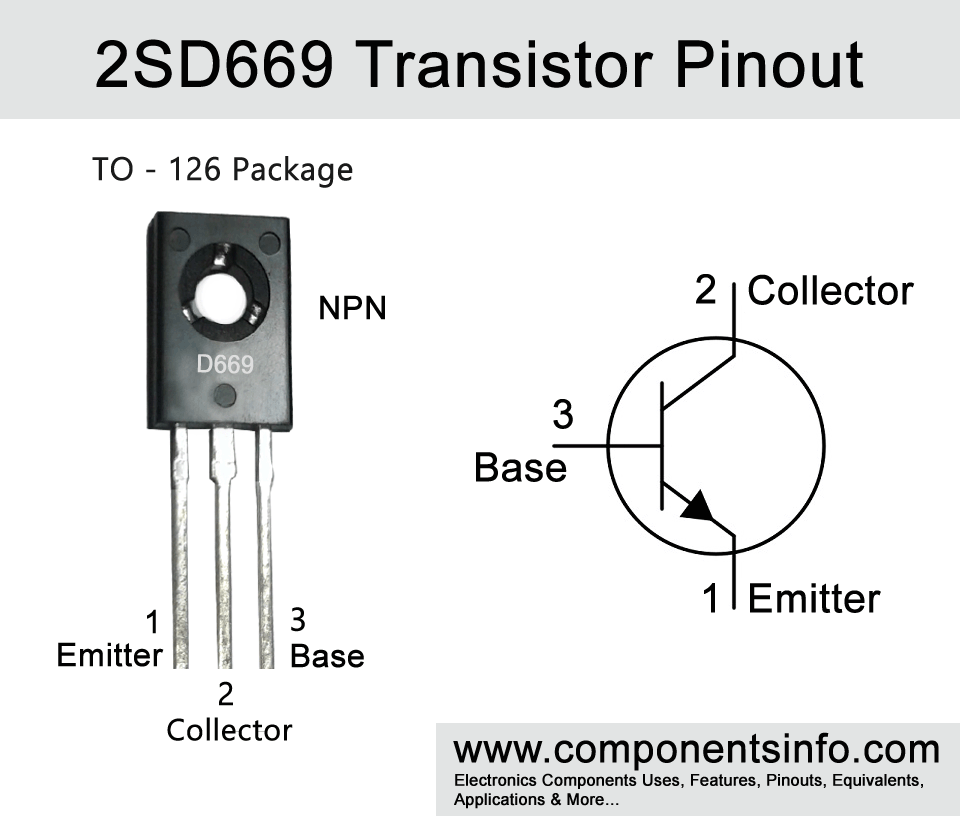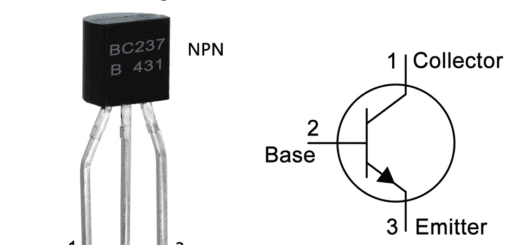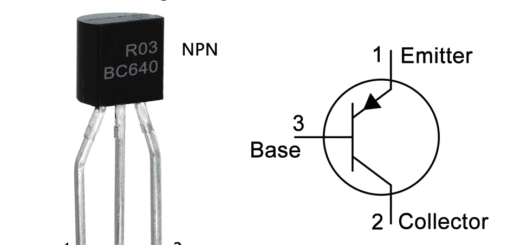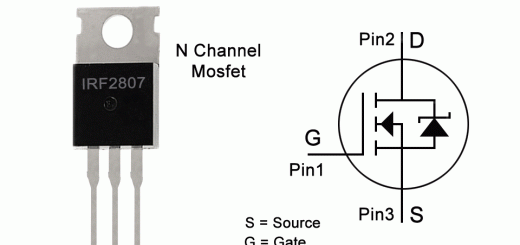D669 Transistor Pinout, Features, Applications, Equivalent and Other Useful Info
If you are looking for a good high voltage transistor that can be used in all of your general purpose requirements then 2SD669 might be a good choice. It is an NPN transistor and available in TO-126 package, in this post you will find details about D669 transistor pinout, features, applications, equivalent and other useful info such as where and how to use it and more.
Features / Technical Specifications:
- Package Type: TO-126
- Transistor Type: NPN
- Max Collector Current(IC):1.5A
- Max Collector-Emitter Voltage (VCE): 120V
- Max Collector-Base Voltage (VCE): 180V
- Max Emitter-Base Voltage (VBE): 5V
- Max Power Dissipation (Pc): 1W
- Max Transition Frequency (fT): 140 MHz
- Minimum & Maximum DC Current Gain (hFE): 60 to 320
- Max Storage, Operating & Junction temperature range: -55 to +150 Centigrade
PNP Complementary:
PNP complimentary of 2SD669 is 2SB649
Replacement and Equivalent:
2SC3117, mje344, 2SD669A/B/C, 2SC3790, BU724, 2SC3503, BU724A, 2SC3425, KSC2752Y, 2SD483, 2SD1839.
2SD669 Transistor Explained / Description:
If you are looking for a good high voltage transistor that can be used variety of applications then D669 might be a good choice. The transistor is actually designed for power amplifier applications at low frequency region but not only limited to this applications and can be used in variety of other general purpose applications that comes under its ratings.
Looking at the pin configuration of the transistor the first pin of the transistor is “Emitter”, second pin is “Collector” and third pin is “Base”.
The absolute maximum rating of the transistor are max collector to emitter voltage is 120V, max collector current is 1.5A, max collector to base voltage is 180V, max emitter to base voltage is 5V and max power dissipation is 1W.
Now looking at some electrical characteristics of the transistor the max collector to emitter saturation voltage is 1V, DC current gain is from 60 to 320, output capacitance is 14pF and transition frequency is 140MHz.
The transistor is available in three different versions according to its hFE classification which can be determined with the help of the alphabet written after the part number. If the alphabet is “B” then the hFE will be 60-120, if “C” then its hFE will be 100-200 and if “D” then its hFE will be 160-320.
Where We Can Use it & How to Use:
D669 is a versatile transistor designed for L-F power amplification. Pairing it with its complimentary transistor makes them a vital component for amplification of various types of applications. But as mentioned above the D669 transistor is not limited to these applications and can also be used in switching, RF and other applications. The list of its applications can be found under the applications heading below.
Applications:
General purpose amplifiers
Audio amplifier and other audio related applications
Radio and RF Applications under 140MHz
Switching and Driving Loads
Voltage amplifiers
Power Supply Regulation
Any general purpose applications that fall under its ratings
How to Safely Long Run in a Circuit:
When operating the transistor it is important to keep in mind the safe operating guidelines of the transistor. First of all it is important to understand that the absolute maximum limits of any transistor are its max limits and it is important to stay atleast 20% below from these ratings to get stable and long term performance.
- So the max collector to emitter voltage is 120V therefore do not drive load of more than 96V.
- The max collector current is 1.5A, therefore do not drive load of more than 1.2A.
- Max emitter to base voltage should be under 5V.
- Max power dissipation should be under 1W.
- Use a suitable heatsink with the transistor.
- Always store and operate the transistor at temperatures above -55°C and below +150 °C.
.
Datasheet:
To download the datasheet just copy and paste the below link in your browser.
https://z3d9b7u8.stackpathcdn.com/pdf-down/2/S/D/2SD669A_HitachiSemiconductor.pdf



